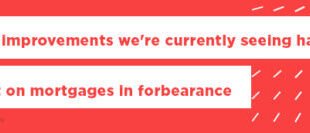
When it comes to buying a new home, finding the perfect neighborhood can be as exciting and as challenging as finding the ideal house. From suitability to affordability to accessibility, many factors go into deciding where to live — and where not to.
Sometimes you’ll know it when you see it, but take a peek under the hood to make sure the neighborhood is everything you want it to be. To help, Movement Mortgage boiled down the key considerations that can make it easier to choose the best neighborhood for your family.
Do your research.
This is a no-brainer, but we can’t stress it enough. Once you’ve narrowed down the city or town you’re thinking of living in, drill down into the neighborhoods. When digging deeper, ask yourself the important questions that will affect your daily life:
- Is the neighborhood a relatively quiet area, or one that’s more active, and how does that mesh with your lifestyle?
- Is it walkable? This is good to know if you like meeting neighbors while strolling or walking the bog. Having well-maintained sidewalks is also a sign of community safety.
- Is there a decent collection of shops and restaurants?
- Is it dotted with parks and open spaces? Are there tree-lined streets?
- Is it an older neighborhood or a newer development? Are neighbors in your age-bracket (and does that matter to you)?
- Is the community tight-knit or more private?
There are many online resources to find answers to these questions—but there’s only so much you can learn online. There’s no real substitute for visiting the neighborhood in-person, going to a park or cafe, walking around, and picturing your life there.
Don’t forget about taxes
Don’t just limit your budget to the asking price of the house; consider the burden of potential property taxes. When choosing a neighborhood, investigate average property taxes for the surrounding area. Be sure to go back a few years to determine if the tax history shows declines, a steady climb, or a leveling off.
If you’re moving to a newer development or a neighborhood that’s being revitalized, understand that taxes will probably adjust as amenities are added. As a community grows and changes, new streets, schools and parks are needed. That can result in increased property values (YAY) and higher property taxes (BOO).
On the opposite end of the spectrum, if an older neighborhood hasn’t had a tax adjustment in quite some time, a property tax revaluation could cause a sharp spike down the road. Be forewarned!
Reading, writing and arithmetic
If you have younger children or are thinking of starting a family, it’s smart to seek out a neighborhood with a reputable school system. Your best bet is to look beyond school rankings by asking the local board of education to provide a tour of their schools. Then, to really get a feel for the bumps and bruises that might be lying underneath, attend a PTA meeting or a school-sponsored sporting event. And chat with some local parents: They’ll tell you the truth.
The quality of a school district is just as important even if you don’t have a family. Down the road, a well-run school district can improve your home’s resale value.
Crime & safety
Google “crime statistics by neighborhood” for the city you’re house hunting in, and your search results will include all sorts of transgressions happening in the area. Big cities typically have detailed crime reports, while smaller towns may only have general information and focus on quality-of-life issues in the absence of significant criminality. Still, this stuff can also be pretty enlightening and give you a good feel for the neighborhood’s tone and tolerance levels.
But like everything in life, it also makes sense to visit the areas you’re interested in and ask around. If given the opportunity, the locals are happy to tell you what the real issues are.
Work commutes
You’re probably familiar with the hashtag #WFH that’s been trending since the coronavirus pandemic got real. If not, it stands for Working from Home, or remote working. Many companies have opened their eyes to the fact that having employees work from home can significantly reduce operational costs and rent needed to house staff in a big office.
If you’re able to #WFH (and you enjoy it), that’s great. If not, and you have to commute to an office or job site every day, you’ll want to get a good feeling for how long it takes to get to work. Will you be driving? Try out the route a couple of times, especially during peak hours. And if you travel for business, look at how long it takes to get to the nearest airport. Is public transportation an option? Are train and bus stations easy to get to, and do they offer protection from the weather? All good things to dig into.
Let’s talk about the weather
Many people forget to consider weather as a factor when choosing a place to live. And if you’re moving reasonably close to where you currently live, the weather probably won’t be that much different than what you’re used to.
But if you’re relocating out of state, especially to another region, the weather should play a role in finding a neighborhood. Do you hate shoveling snow? Don’t look in the Northeast, Does rain bum you out? Skip the Pacific Northwest.
List the activities your family enjoys and determine if weather patterns in the places you’re looking to live support that activity. If you’re a real weather junkie (or okay with becoming one), do an internet search for “typical weather in” followed by the name of the city you’re thinking of moving to. You’ll get lost for hours.
All politics are local
The entire country is getting more and more diverse. But if being among like-minded neighbors is important, do your research on how the city or county you’re thinking of moving to generally votes. Are you looking for a conservative climate or a more liberal one? Are you looking to immerse yourself in local politics?
There are other factors, too. For example, if you consider yourself an environmentalist, seek out neighborhoods with higher density housing and access to mass transit, closer to downtown workplaces, and neighbors who share similar preferences. Online versions of the local paper are the best way to get a quick feel for a potential new neighborhood’s political leanings.
Looking ahead
Without a crystal ball, it’s hard to predict your neighborhood’s future. Will new developments or apartment buildings bring a lot of traffic to the area? Are golf-courses, hospitals, and shopping centers on the way? If this is going to be your forever home, you’ll likely see many changes down the road. But even if nothing is currently being planned, empty lots and unused wooded areas offer plenty of opportunities to develop. Educate yourself and find out what’s protected and what’s open to development.
On the opposite side of the coin, if you see abandoned buildings and “for sale” signs, the neighborhood may be on a down-swing. Are you comfortable with being a pioneer in a community trying to turn itself around? The benefits are many, but it’s clearly not for everyone.
Main Takeaway: Lock in the ‘hood first
We feel it’s best to choose a neighborhood first, then look for a home in that neighborhood. The last thing you want is to love the house but hate the location.
Take the time to connect with a local expert — a real estate agent who’ll be familiar with the best areas and what’s in the market in your price range. It’s especially important to work with an experienced lender. We have mortgage professionals across the country who can help with financing when you’re ready.
Hopefully, these tips for finding the perfect neighborhood will help. We wish you good luck!



